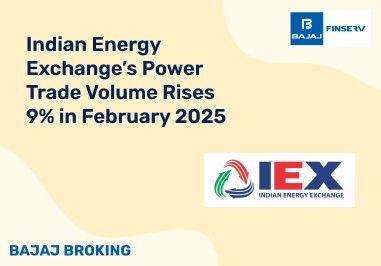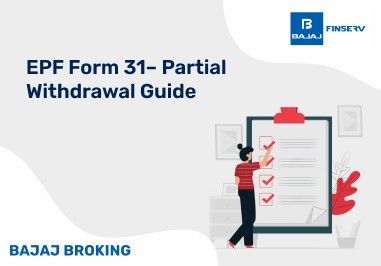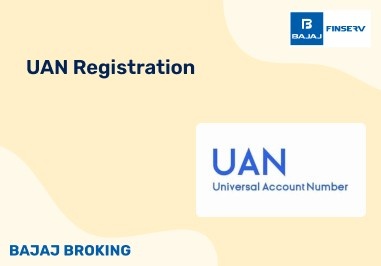BAJAJ BROKING
Balaji Phosphates IPO is Open!
Q3 FY'25 Results of Top Companies!
Open a Free Demat Account
Trade Now, Pay Later with up to 4x
Track Market Movers Instantly
Hammer Candlestick Pattern
When you’re navigating the stock market, understanding candlestick patterns is like having a map that highlights possible paths the market could take. These patterns are crucial for investors because they can hint at which way the stock prices might move. One particular pattern that is popular for its promise of a market turnaround is the hammer candlestick pattern.
Just like the hammer it’s named after, this pattern stands out in a chart with a shape that’s easy to recognise. It’s a signal flag for traders who have been watching stock prices fall, suggesting that the downturn could be at the end of its run and a positive change may be on the horizon. Essentially, when the hammer pattern appears, it suggests that the sellers are losing strength and the buyers might be stepping in.
In this blog post, we’re going to walk you through what this pattern means and how you can identify it. We’ll also differentiate the hammer from other patterns, delve into its variations, and talk about its limitations.
What is a Hammer Candlestick Pattern?
Imagine you’re looking at the skyline and you spot a building that stands out because of its unique shape – that’s similar to spotting a hammer in a candlestick pattern on your trading chart. A hammer candlestick pattern occurs after a price decline and is a potential indicator of a reversal in the downtrend. It resembles a hammer – a small body with a long lower wick, signalling that the market is attempting to find a bottom.
The psychology behind this pattern is that despite the market’s push to drive the prices down, the bullish investors gather enough strength to pull the prices back up, closing near the opening level. This suggests that the sellers are losing their grip, and the buyers may be gaining ground, indicating a possible shift in momentum.
Additional Read: Head and Shoulders Chart Pattern
How to Identify Hammer Candlestick Patterns?
To spot a hammer in a candlestick chart, you need to pay attention to a few details:
- The lower wick should be at least twice the size of the body, reflecting a significant sell-off during the trading period, followed by a strong comeback.
- The body of the candlestick should be at the upper end of the trading range; the colour is not of prime importance, although a green or white body is more bullish than a red or black body.
- There should be little or no upper wick.
- The pattern should emerge during a downtrend for it to be considered a hammer.
Additional Read: What is Pure Play?
Types of Hammer Candlestick
The hammer candlestick pattern has a few different versions, and each one has its unique significance:
The Classic Hammer
This is the textbook hammer, with a small body at the upper end of the trading range and a long lower shadow that signifies the price action was rejected by the market.
The Inverted Hammer
Although it shares similarities with the classic hammer, the inverted hammer has a long upper wick. It occurs during a downtrend and could signal a reversal, representing a battle between bulls and bears where the bulls are gaining an edge.
Distinguishing between these types is crucial because they convey slightly different sentiments and must be interpreted with attention to context.
Additional Read: What is Pyramid trading?
Difference Between Hammer Candlestick and Doji
While they both are indicators of potential market reversals, there’s a fine line separating a hammer candlestick from a Doji:
- Shape: A doji is characterised by a very small or virtually non-existent body, with wicks on both ends, signalling indecision. On the other hand, the candlestick hammer pattern sports a sizable lower wick and a small body at the top, indicating a stronger buying pressure following a sell-off.
- Implication: A doji suggests a stalemate where neither buyers nor sellers get the upper hand, while a hammer indicates that buyers are gaining an advantage.
Identifying these subtle differences is key to making informed trading decisions.
Limitations of the Hammer Candlestick Pattern:
Although the hammer candlestick pattern can act as a guiding light amid the uncertainty of market trends, it comes with its own set of challenges:
- False Signals: Sometimes, what looks like a hammer might not actually signal a reversal; it could just be a pause in the downtrend.
- Need for Confirmation: It’s considered prudent to wait for confirmation in the form of a bullish candle following the hammer pattern.
- Context Matters: A hammer pattern in isolation doesn’t carry much weight. It should occur during a downtrend and be supported by other technical indicators.
- Volume: Ideally, the hammer should be accompanied by a higher volume, which lends credence to the reversal signal.
Navigating these limitations requires experience and a balanced approach to interpreting market signals.
Additional Read: What is EMA in stocks?
Conclusion
The hammer candlestick pattern serves as a symbol for those navigating the tricky stock market. It’s a sign of potential change, signalling that the market’s downtrend might pause and the uptrend could begin. Remember, though, that the hammer is just one tool in your trading toolkit. No signal is perfect, and the hammer must be used with caution, complemented by other technical analysis tools and a good understanding of the market context.
As you continue your trading journey, keep an eye out for the hammer in candlestick charts. With practice and patience, you’ll learn to spot and interpret this pattern, and perhaps it will become a powerful ally in your trading decisions.
Disclaimer: Investments in the securities market are subject to market risk, read all related documents carefully before investing.
This content is for educational purposes only.
Share this article:
Read More Blogs
Our Secure Trading Platforms
Level up your stock market experience: Download the Bajaj Broking App for effortless investing and trading













